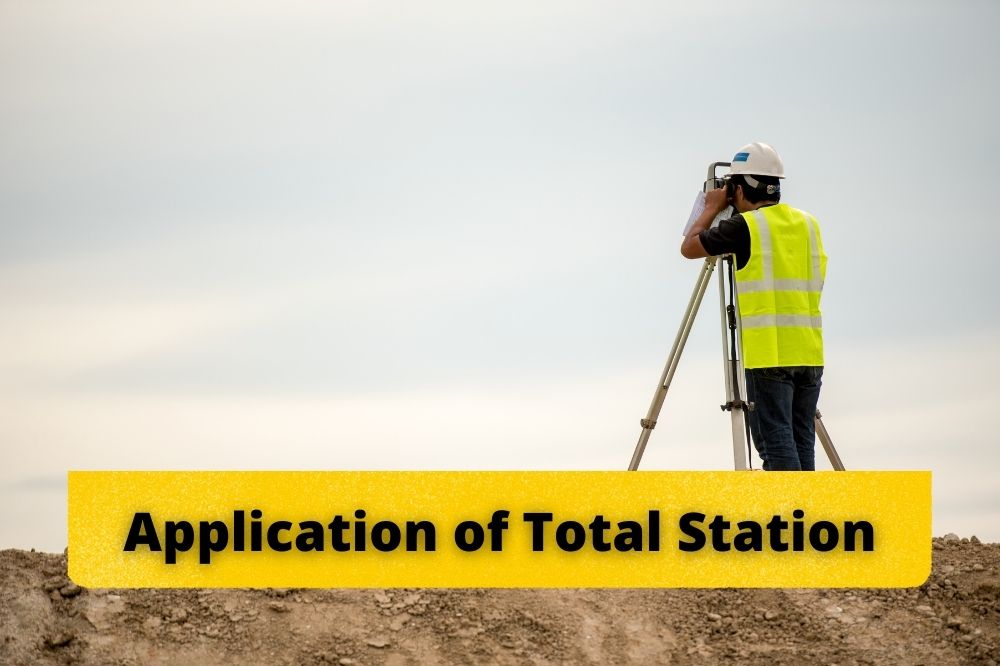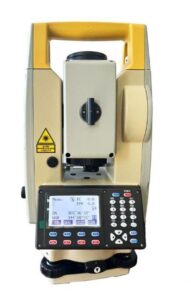Table of Contents
Total Station Applications In Surveying
Total station applications in surveying, along with GPS, can be useful in many different types of surveying scenarios. There are dozens of uses that these devices can be put to, from simple survey jobs to complex engineering work that requires the highest precision possible. This guide will help you understand the ways in which total stations can be used in all kinds of survey work, and get you started on getting the most out of your instrument’s capabilities!
What is total station
Total station, or total station as known by some, is a surveying equipment used for measuring large distances. The device has evolved significantly over time to meet surveyors’ needs with features that make measuring more accurate and comfortable. Read on to know more about applications of total station.
Learn More:- What is total station?
Features of total station
The features of a total station can vary by manufacturer, but most high-end models will include a digital display with touch screen interface; GPS, GNSS or GLONASS receiver; internal memory for storing and tracking job locations; electronic distance measurement tool (EDM); and data collector. Total stations are ideal for everyday surveying, construction projects and engineering jobs. The following is an overview of what you can expect from a typical total station.
Instrumentation
Total stations are used in a variety of different applications. From construction to mining, there is an application for every need. No matter what industry or field you are working in, total stations can help make life easier and work safer.
Learn More:- Instrumentation of total station.
Accuracy
A total station is a laser-guided measuring device that allows for high levels of accuracy. In order to obtain high levels of accuracy, a surveyor must follow specific procedures when using his or her equipment and also possess certain skills. At times, manual surveying may seem as though it yields more accurate results, but in truth, when working with difficult or large-scale projects, a total station proves indispensable.
Uses of total station in geodetic survey
Surveyors have used total stations for land surveying, building construction and various other applications for nearly half a century. Since its advent in 1962, total station has been utilized extensively for land survey by civil engineers, geologists and geographic information system (GIS) professionals. Geodetic surveys require high levels of accuracy due to their applications in determining coordinates of latitude and longitude based on altitudes of celestial bodies. Total stations are also widely used in boundary surveys and boundary verification, as well as construction project management. Recent development in technology and software has paved way for new applications such as GPS-triggered angle measurements that increases accuracy levels when taking angle measurements from satellites, which is ideal for construction site mapping services and bridge measurement among many others.
Applications of total station in land surveying
Although total station is used in a broad spectrum of land surveying applications, there are certain applications where total station has marked superiority over other tools. Land surveyors will always find plenty of uses for their total stations while they go about doing their jobs. A brief look at some application areas that would be incomplete without using total stations: Topographic Mapping : In remote areas, rugged terrains and/or places where GPS is not available; topographic mapping can only be done with Total Stations. Watercourse & Traffic Surveys : Surveying watercourses, railroad tracks or highways by foot or from on a moving vehicle would have been virtually impossible before Total Stations were introduced.
Uses of total station in construction and engineering
Traditionally, total stations have been used in construction and engineering applications. They’re a great tool for building site surveying and taking architectural measurements. Total stations are also ideal for tracking job progress by comparing changes over time and calculating height or depth differences. Over time, civil engineers have also begun using total stations to better monitor traffic conditions and track pollution levels. Total stations have even been used to determine plume patterns around nuclear power plants that leak into groundwater; they’re often combined with radioactivity detection devices and photographic equipment to measure hazardous environments on both land and sea. Considering these extensive uses of total station in industry, it’s clear why they’ve become a standard piece of equipment for many engineers and contractors.
Uses of total station in agricultural survey
An agricultural survey would help a farmer in assessing whether or not his crops are growing at their maximum potential. By using a total station, he is able to get detailed measurements of crop yield, how many units of land are being used for what purposes, if any parts of his field need improvements or adjustments and so on. He will be able to get data from a multitude of sources as opposed to just looking out from his window or relying on hearsay from other farmers in town. The data collected can be used for marketing purposes as well; by measuring exactly how much product he has produced he’ll know what kind of demand there is and can respond accordingly.
Uses of total station in mapping
Total stations, also called theodolites or tachometers are used for surveying and mapping. Total stations are used to measure distances from one point to another by using angular measurements between three points. They can be used by professional surveyors or land surveyors, as well as people who want to do their own surveying projects (such as when building a house). These instruments use transits – small telescopes mounted onto tripods that swivel 360 degrees – to locate bearings. The data is stored on a computer, which uses software to calculate horizontal distance by measuring angles and distances between three points in space.
Visit More Total Station Blogs:-
DOWNLOAD
Keywords:-
total station applications in surveying, applications of total station, uses of total station, what is total station, how to use total station


